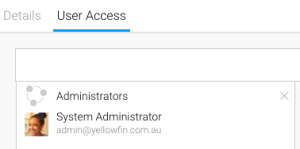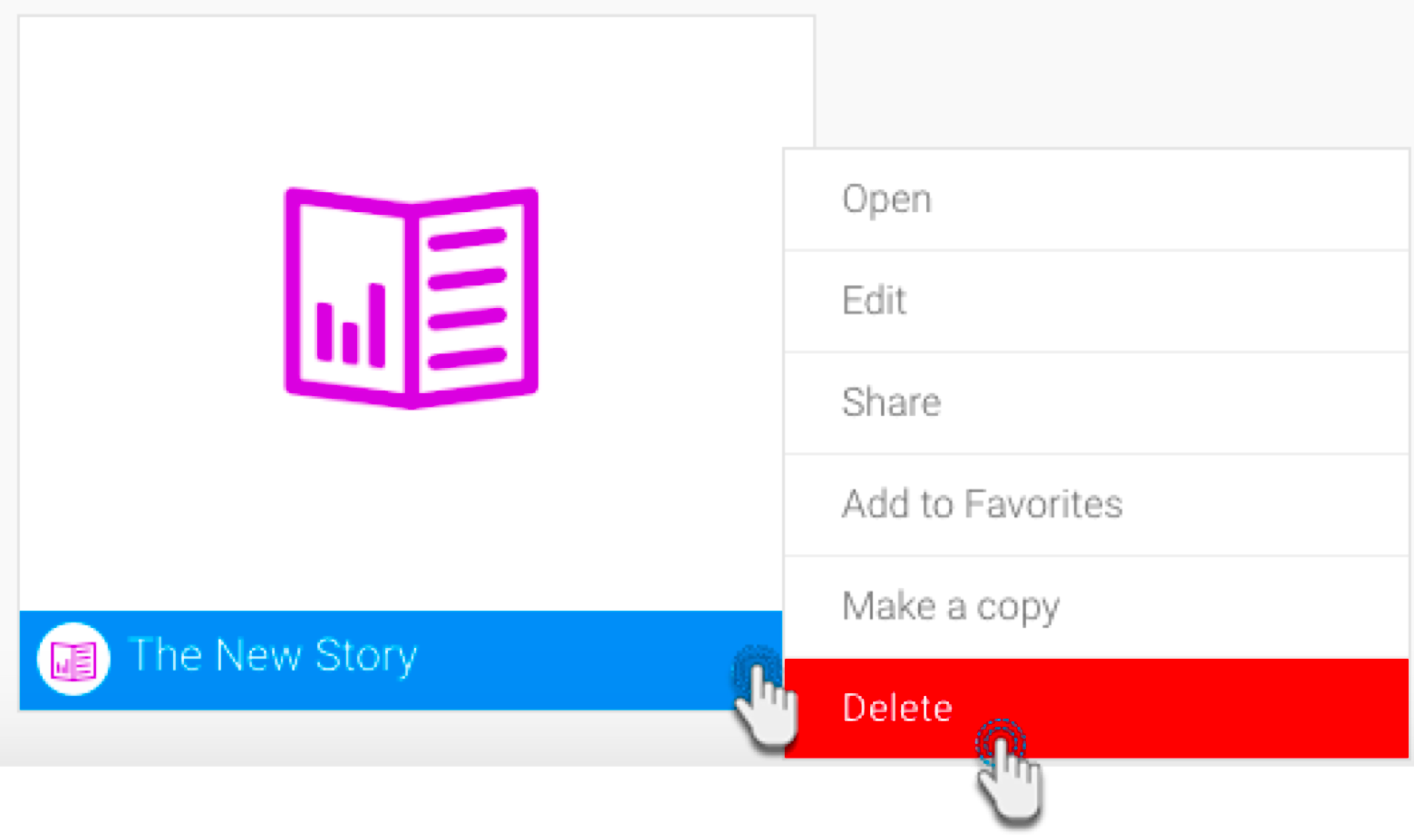Section Overview
Once your story is ready, you can publish and share it. This involves activating the Story to make it available to other users besides the collaborators.
Publishing a Story
When publishing, you can choose to make the story publicly accessible to all Yellowfin users, or a specific set of users by setting the access rights to the story accordingly.
Once you are ready to publish your story, follow these steps.
- Click Publish at the top-right corner of the story builder.
- In the new popup, you can enter or edit the story title. (If your story already has a title, the first field will display it; if you change the title, it will be updated in the story as well. If no title is provided, your story will be named 'Untitled Story'.)
- Provide a description for the story to assist users with understanding its purpose and content.
- Select a folder and sub folder to save the story into. You will only be able to select folders you have access to.
- Choose a story access setting:
- Public: permits all users with folder access to be able to view this story.
- Private: the author/collaborator may assign users access to the story. In this case, a new User Access tab will appear, allowing you to add specific users.
- Click the Publish button to save and activate the story.
- Upon publishing, a share popup will appear. You can use this to share the published story with other users and groups. Click Submit after selecting users. The selected users will receive an email notification of the story.
Note: You can always share the story at a later time. - Once a Story is published, you can view its author, editors, and collaborators at the bottom of the page.
Story Approval
For utmost security and data governance, you can set up your process so that your Stories will require approval before they're published and made available to the users. This is achieved by saving the Story into a private content folder. Only once a Story is approved, will it get published for readers. Also note that when a Story is pending approval, it can still be viewed and edited by its author and collaborators.
Each content folder only has one approver. If a user group gets assigned to approve Stories, the group member with the least number of tasks gets appointed as the content approver.
Any user with the Approval Admin role function will also be able to approve a story besides the appointed approver.
Approvers can only review the Story without making any changes to it. Following outlines the approval workflow:
- The author/collaborator publishes the story, selecting a secure folder to save it into. A message will appear on doing so (this only appears if the user saving this Story is not the approver of the folder). Note: Secure folders can be identified with the security icon next to them.
- Enter a message to be sent to the approver with this request, and click the Request Approval button.
The approver will get a message on their timeline, notifying them of this update. - On accessing this story, they will see it in its preview mode. Click on the Approval Required button.
- This brings up the approval message in the Activity Panel. (Simultaneously, this panel message will also come up if the approver clicks on the Timeline message for the Story.)
- If the approver is happy to approve the Story, they will need to click on the Approve button.
- Once approved, users with rights to the Story will be able to view it. Approved Stories also include the name of the approver, increasing the reader's trust in the information shared.
- Alternatively, an approver can reject a story, in which case it will not be published. (Warning: you cannot undo this action, until the story is updated and requested for approval again.)
- In the activity panel, click on the dropdown button and choose Reject.
- You must enter a reason for rejecting the Story. Then click Submit.
- The Story will then be placed in draft mode. You can repeat the approval process again after updating the Story.
- In the activity panel, click on the dropdown button and choose Reject.
Sharing a published Story
Once a Story is published, you will be able to share it. Public Stories can be shared with any user, however if a Story is private then it can only be shared with specific users that are allowed to view it. Learn how to do this below.
To be able to share a published Story, you will need the "Distribute Story" role function.
- Once your story has been published, click on the Share button in the top right corner.
- In the new popup, specify users or groups to share this story with, and if required, provide an additional message.
- Then click on Submit.
- The recipients will be notified of this with a message on their Timeline and an email.
Editing a published Story
If a published story requires changes, it will need to be viewed in draft or edit mode. Only the story author (or a user with 'Story Admin' role function) can put the story back in draft mode, so that they and the collaborators can update it. Doing so essentially creates a separate draft version. This means that the last published version of the story will still be available for readers, until the updated version is published.
The steps below demonstrate how draft mode is enabled on a story.
- While the story is opened, click More and select Edit Story.
- Alternatively, click on the menu option of the story thumbnail in the Browse page, and click Edit. Click on the Ok button when the confirmation popup appears.
- The following confirmation message will appear. Click Ok to proceed.
- The story will change to, or open in, draft mode, allowing you to edit it as normal. Note that while the story is being updated, the latest published version would still be accessible by viewers.
- To make the updates visible to other viewers, you must publish the story again. This will replace the story with the latest version.
Previewing a Story
You can preview the final outcome of a Story to see what it looks like to the readers at any time. Follow these steps:
- While the story is opened, click More and then Preview.
- You will then be able to view the Story in preview mode.
- To go back to draft mode, click Edit Story at the top-right corner.
Delete a Story
A story can be deleted, but not by just anyone. This action must be performed by the story author, or a user with the 'Story Admin' role function. This way even if a collaborator copies a Story and becomes the author of the copied version, they will not be able to delete the original Story.
A Story that is currently being edited cannot be deleted.
The process of deleting a Story is the same if the Story is published, or still in draft mode.
- Locate the Story that you want to delete in the Browse page.
- Click on its menu icon, and select Delete. (This option will only appear if you have rights to delete the story as state above.)
- A confirmation popup will appear. Click Delete if you are certain you want to delete the Story.
- The Story will be deleted permanently.
Export a Story to PDF
To export a Story to PDF, follow these steps:
- Open you Story.
- On the right side menu, Click on More.
3. Select Export > PDF
4. Select the settings for the PDF and click Export.























